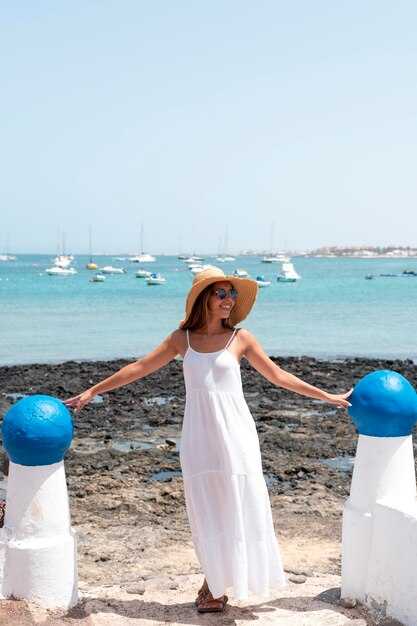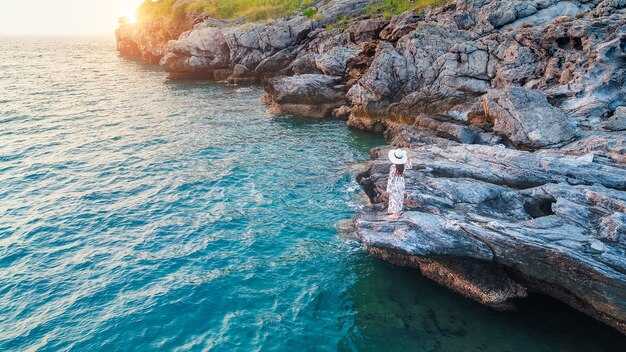
Crete is the best choice for a varied holiday with a long shelf life. The island blends Geschichte, mountain scenery, Stadt life, and easy access to inexpensive rentals around major towns. In a 7–14 Tage itinerary you can walk the mountain trails of western Crete, explore ancient sites like Knossos, and still enjoy tranquil coves and beaches. Crete’s population, well over 500,000, gives you both bustling towns and quieter rural areas to choose from.
Corfu is fantastic for a relaxed holiday with distinct Venetian influences, a western coastline, and easy access to coves sheltered by olive groves. The island offers a wide range of rentals and plenty of sunshine for Tage of beach time; it appeals to families and couples who want relaxing days and gentle strolls in a charming Stadt center. The population is smaller than Crete’s, which makes it feel intimate and easy to navigate between beaches and villages.
Between the two options, the choice comes down to pace and terrain. If you crave mountain hikes, authentic villages, and a richer Geschichte story, Crete offers an incredible mix and an ideal blend of rugged scenery and dining options. For a relaxed escape with beautiful coves and long sunlit beaches, plus a compact Stadt center for evening strolls, Corfu provides a more intimate, relaxed experience. Travel between beaches, villages, and trails is straightforward on both islands, but the rhythm will feel distinct.
To maximize value, search for rentals in villages that stay within easy reach of the coast, and pick an area that matches your pacing. Crete’s western region around Chania offers rugged terrain and dramatic beaches, while the eastern side around Heraklion opens up Knossos and bays such as Elounda. Corfu’s most enjoyable stretches sit along the north and northwest coast, where affordable stays let you spend Tage exploring coves and local taverna life without rushing.
Beaches and Coastal Vibe: Corfu vs Crete for Sun Seekers
For sun seekers, Crete delivers the longest, sun-packed days and the biggest beach options, while Corfu offers small, charming coves that attract couples seeking a serene escape. If you want a complete, whole week by the water without crowds, Crete is the pick; if you prefer a compact, white-sand feel and a warm island host vibe, Corfu fits best.
pros: Corfu is small and easy to navigate, offering a relaxed pace; Crete provides breadth, flexibility, and a west-facing coastline that maximizes sun through long days.
Corfu highlights: intimate coves and a refined west coast scene
- issos: a long beach with white sands that is filled with sunseekers and stays calm through the afternoon.
- kontokali: a west-facing base near Corfu Town, small but charming, with a tight restaurant scene and sunset views.
- west coast options let you skip crowds; below the main towns you discover tiny coves where you can soak up sun without rushing.
- clubs and casual bars add a light night scene after a day by the water, perfect for couples looking for a gentle pace.
- rain is rare in peak season, so you can spend the whole day outside and soak up the light well into the evening.
Crete highlights: vast coastlines, five standout picks, and a broader scene
- kissamos serves as a west-crest base with access to five standout beaches, all reachable through renting a car and exploring at your own pace.
- Falassarna and Balos are iconic big beaches with clear water and long shores that attract sun lovers from morning through late afternoon.
- Elafonisi and Seitan Limania offer dramatic coastlines and quieter parts for days when you want to soak up sun with less crowding.
- the restaurant scene around Kissamos and Chania provides strong options for starters and seafood to refuel midday.
- to experience a complete day, you can combine beach time with short boat trips and a sunset dip, without rushing.
Family-Friendly Itineraries: Where to Stay and What to Do with Kids
kontokali is the best starting base for a full family break in Corfu: it takes you from the airport to a calm coastline in about 15 minutes, with easy shops for grab-and-go meals and a long, safe stretch for little swimmers to enjoy. kerasia is a favourite alternative for those who want quieter spots and a gentle coastal trail that attracts families seeking slower days while still offering kid-friendly cafes and gardens to explore.
Where to Stay with Kids
In Corfu, two easy areas keep things easier for parents: kontokali for straightforward beach days and kerasia for intimate coves and shorter walks. Both offer mid-range to family-sized rooms, with affordable options that average around a family suite or two connected rooms, then toss in a couple of inexpensive tavernas where you can grab a reliable meal after a beach afternoon.
In Crete, malia serves as a practical base with a compact strip of family-friendly hotels and long, soft beaches ideal for sandcastle mornings. If your crew wants a change of pace, kavos can be reached for a day trip to mix nightlife vibes with kid-friendly pockets, though many families prefer to keep younger children closer to their Malian base. For a culture-and-nun-weekend blend, considerknossos within easy driving distance from Heraklion, with nearby gardens and parks that provide shaded spots for breaks between exploration.
What to Do with Kids
On Corfu, you’ll have a full day of beach time at kontokali, then a gentle hike along a coast-to-cove trail that keeps little feet engaged without long drives. Don’t miss easy walks to nearby spots where you can picnic and admire seaside gardens; the area often hosts small markets where you can sample staple dishes and Greek staples, including grilled fish and vegetarian dishes that kids tend to enjoy. At the end of the day, you can enjoy a meal at a family-run taverna, then head back with souvenirs and stories to tell yourself about a day well spent.
In Crete, plan a Knossos day for a mix of myth and archaeology that still feels accessible for children, then swing by malia’s family-friendly beaches for a relaxed afternoon. If you have older kids who crave variety, add a visit to the Botanical Gardens and a coastal hike nearby for fresh air and colorful flowers. Typical meals include simple, kid-friendly options, and you’ll often find tavernas where you can grab fresh dishes, share a spread with the group, and enjoy sunset views after a full day of adventures. If you’re budgeting, expect mid-range options that are comfortable for families, with some expensive hotels offering larger suites; choose based on how many beds you need and how close you want to be to Knossos or the coast, then tailor your pace to your family’s rhythm.
Food Scene and Cultural Highlights: Local Dishes and Dining Pace
Choose Crete for a slower dining pace and deeply local dishes.
Corfu offers a lively coastal scene with attractions around ports, where seafood dominates menus and the population swells in the peak months, giving evenings a festive energy over the waterfront.
Crete’s menu centers on rustic flavors: dakos on barley rusks with tomato and feta, kalitsounia, and gamopilafo, all enhanced by olive oil, oregano, capers, and damour olives that give salads a sunny tang.
Corfu’s signatures include sofrito, pastitsada, and bourdeto, often finished with olive oil and fresh greens; you’ll find more seafood options that feel similar in style, and the kitchen still loves bright herbs and citrus to lift bold sauces.
Dining rhythm on Crete invites long, relaxed meals with meze shared across several courses, while Corfu tavernas tend to fill quickly around lunch and cruise-ship arrivals, with locals and visitors grabbing seats near the waterfront.
Expensive spots exist along the coast during the busy season, but inland tavernas generally offer great value, and you can still have delicious meals without breaking the budget. Generally, plan to eat late in the evening to catch true local flavor at its best.
Renting a car or scooter helps you reach hillside villages and the south coast, where the best food hides in small squares and in family-run joints that stay open well into the night.
A studio stay in a town center gives you easy access to markets, bakeries, and late-evening grills, plus a chance to mingle with locals after the rush hour crowds have faded.
If you love scuba, both islands deliver options, with Crete’s south coast offering sheltered coves and dramatic wreck sites, and Corfu’s coves providing clear-water dives close to shore – a nice complement to long dinners and market visits.
Opinion from nikolaos, a tavern keeper, is to begin with dakos, move to a hearty main course, and finish with honey-drenched desserts that echo the season’s fruit; his tips remind visitors that freshness is the core of both islands’ food scenes.
Grab a bite at a seaside grill for a quick, delicious option, or linger over a slow-poured coffee and a plate of olives while watching the day’s last light on the water; the dining pace here invites you to savor, not rush, every moment.
Similar ingredients appear on both islands, yet Corfu’s coastal vibe and Crete’s interior networks create distinct experiences; still, you’ll meet friendly cooks, passionate restaurateurs, and incredible home-style dishes at every turn, with each meal offering a sense of place you’ll carry home.
Offered classes, markets, and neighborhood eateries ensure you can immerse in local culture beyond the table, making food a doorway to attractions, stories, and memories that extend beyond your stay.
Best Time to Visit: Weather, Crowds, and Island Pace by Season
Plan Crete in May or September for ideal climate, manageable crowds, and a relaxed pace; Corfu follows the same pattern with visits in May, June, or September to enjoy bluewater days without peak heat.
Spring and Autumn: Ideal Windows
Spring (April–June) brings mild days, with daytime highs around 20–26 C and limited rain, perfect for exploring Knossos, Preveli lagoon, and a selection of pebbly beaches. Crete’s size invites slow travel: rent a car, your pace matters, and spend your mornings exploring attractions before the day warms. While you roam, you’ll notice Venetian remnants along the coast and a handful of trails that connect villages with bluewater views. In autumn (September–October) temperatures stay warm (22–28 C), crowds ease, and you can linger at Balos and other lagoons, then enjoy a relaxed evening in a hillside taverna. For Corfu, the island stays green and inviting during this window, offering known attractions with fewer travelers and longer, quieter afternoons. Travelers seeking a quieter break will find spring and autumn deliver the best rhythm.
Summer and Winter: Crowds, Heat, and Quiet Pace
Summer (July–August) brings populous beaches and long days; plan early starts, use a rental for efficient island-hopping, and target lesser-known coves to maximize space. Expect hot, dry weather and sea temperatures in the low to mid 20s, great for bluewater swims after sunrise. If you want a quieter pace, winter (November–March) lowers crowds, raises chances of rain, and reduces ferry schedules, but prices drop and many museums remain accessible with shorter lines. Across these seasons, Crete offers more variety than the cyclades in terms of distance between sites and the breadth of attractions, letting you combine iconic sites like Knossos with beach days at pebbly shores or the Preveli lagoon. A May–June or September–October trip provides the ideal balance of weather, crowds, and pace, ensuring holidays that let you explore Balos, Preveli, and other known spots at your own rhythm.
Getting There and Getting Around: Airports, Ferries, and Local Transport

Crete rewards a traveler with varied terrain and archaeological sights; Corfu rewards a laid-back, family-friendly rhythm. For access, fly into Heraklion International (HER) or Chania (CHQ) in Crete, or into Corfu International (CFU). In peak season, direct routes from several European cities speed the start, while Athens connections offer a reliable fallback.
Ferries link the islands with the mainland: from Piraeus or Rafina you reach Crete’s ports, and Igoumenitsa or Patras serve Corfu. Summer timetables run frequently, so book ahead if you plan a mid‑summer stay. The balos beach is one of Crete’s dramatic spots, often accessed by a mix of road and boat transfers starting from Kissamos.
Air connections and ferries
| Gateway | Direct connections | Sich fortbewegen | Anmerkungen |
|---|---|---|---|
| Crete (HER/CHQ) | Seasonal direct routes from many European cities; year‑round links via Athens | Rental cars commonly available; KTEL buses connect major towns | Western and eastern routes differ; Balos access requires a car or a boat transfer |
| Corfu (CFU) | Frequent summer flights from Europe; regular services year‑round from Athens | Compact island; rental cars or local buses cover key sights | Old town and aūvenetian settings offer a touch of history; avlaki as a quiet base |
Renting a vehicle speeds exploring those sights, and a rental desk at the airport makes pickup convenient. Bring a valid license; some agencies request an international license. If you prefer not to drive, private transfers and bus networks provide a steady rhythm through major town centers.
On Crete, plan a hike to coastal towns or gorges to see the bottom of the island’s dramatic topography, while on Corfu you’ll enjoy a touch of Venetian charm threaded through quaint villages and bustling town streets. The climate favors long beach days, with hot, sunny summers and light sea breezes that keep evenings comfortable in both destinations.
Base ideas: avlaki pairs well with a relaxed pace and easy access to Corfu Town’s boutiques and family-friendly eateries; towns along the coast offer a mix of restaurants, clubs, and casual venues with a genuine sense of setting and life. In both islands, you’ll find a blend of ingredients–local cheeses, olive oil, herbs–that enrich meals after a day of exploring sights and historic sites.
Bottom line: start with one well‑positioned base, then use day trips to broaden your perspective. Those who want a concentrated island experience may choose Corfu for its compact routes and town ambience, while those craving a broader range of beaches, archaeological sites, and varied settings may prefer Crete’s larger scale and more diverse landscapes.


Kommentare